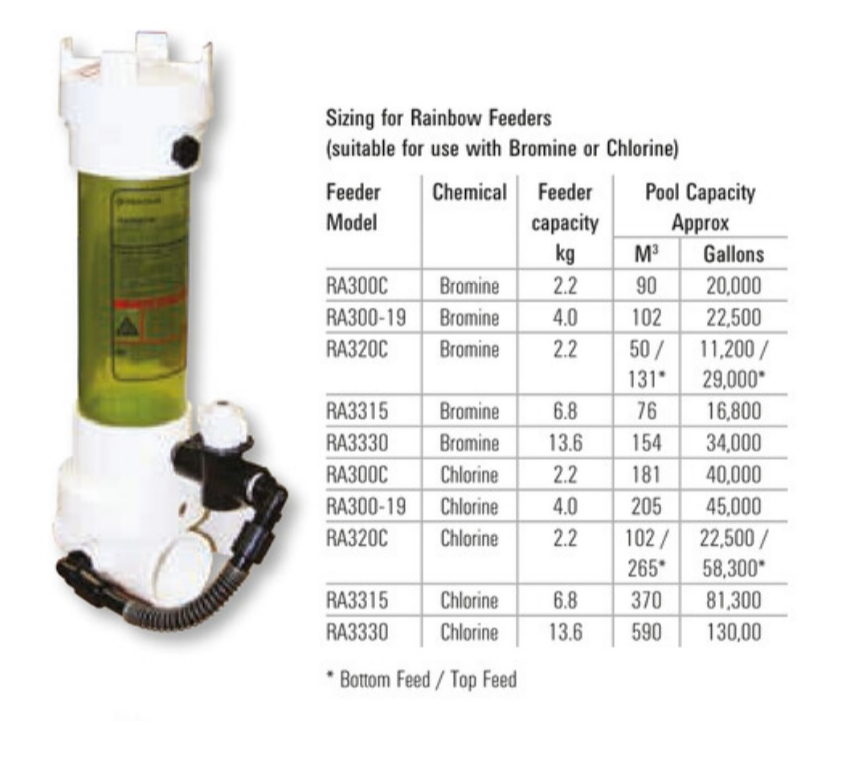Water Treatment with a Brominator
Both bromine and chlorine are available in 200g - 300g tablets or 20g mini-tablet format. Both dissolve steadily when immersed in water. Brominators and Chlorinators are very similar and look like this. There are two types "on-line" and "off-line". This refers to how the machine is plumbed in and is self-explanatory. Bluepools prefers the "on-line" types as there is less to go wrong and they are simpler to install.

How it works:
There are 2 types of bromine disinfectants: bromochlorodimethylhydantoin (BCDMH) and sodium bromide in combination with a chlorine donor. BCDMH dissolves in pool water to form hypobromous acid (HOBr) that kills bacteria and oxidises organic matter like chlorine systems leaving bromide ions in the water.
BCDMH dissolves very slowly and so the brominator needs to be designed to allow for this as too small a unit will not release enough HOBr. Such brominators are not suitable for chlorine tablets. Note that bromine tablets are designed to go in a brominator and should never be put in a skimmer.
If the pool is managed properly chlorine will work without any negative side affects and there is no real point in using bromine as it is more complicated to use, costs quite a lot more and is less freely available from pool accessory shops.
Does Not Eliminate Allergic Reactions:
Swimmers with naturally sensitive skin may prefer bromine but it is in the same chemical periodic group as chlorine amd may still instigate allergic reactions like asthma attacks as chlorine can.
Bromine is un-stabilised and so does not last long in strong sunlight.
Bromine use in a Spa:
Bromine is more stable in hot water than chlorine and so provides longer lasting sanitation in a spa with the water temperature up to 40°C. It also remains more stable in a wider range of pH and so remains strong under rapid pH swings. As spas are often indoors and heavily used bromine is often preferred for spa disinfection.
